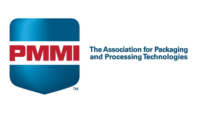STATE OF THE INDUSTRY: PACKAGING
State of the Industry: Packaging shifts to renewable sources
Primary objectives focus on sustainability and shelf life.

Photo credit: Getty Images / Kwangmoozaa
Consumers continue to consider sustainability when making purchasing decisions. As a result, producers of meat, poultry, and seafood products are working to reduce plastic usage, especially single-use plastic, and adopt substrates from renewable sources. When plastic packaging is specified, recyclable and recycled-content options help support efforts to establish a circular economy for plastic.
Some companies have embraced a broader perspective on sustainability by vertically integrating the growing of fish and livestock with its processing, packaging, and waste recycling. This reduces travel distance, animal stress, fuel consumption, carbon footprint, and waste disposal costs. It also can simplify serving the e-commerce channel because a streamlined process moves animals from their nearby, sometimes on-site, home through harvesting, packaging, and direct-to-consumer shipping.
The industry also has taken a broad perspective to advance sustainability. For example, participation in the Protein Pact helps producers set targets and collect data related to reducing greenhouse gas emissions and improving animal care, food safety, labor and human rights, and health and wellness, according to the Meat Institute, 2021.
Renewable packaging options
Packaging material providers have been hard at work developing recyclable fiber-based paperboard or corrugated alternatives to polyethylene, polyethylene terephthalate, polypropylene, expanded polystyrene foam, and nonrecyclable wax-coated paperboard/corrugated. These innovations for primary, secondary, and distribution packaging achieve moisture resistance via an easily separated film layer or a food-grade coating, which does not affect recyclability. Some tray designs can be printed to provide an upscale presentation and/or reduce the need for a separate label or paperboard sleeve/carton. Fiber-based packaging formats often can serve as a drop-in replacement to their plastic counterparts and offer equal or better shelf life along with cost parity or savings. Recyclable fiber-based packaging also can eliminate waste disposal fees incurred with non-recyclable packaging, increase efficiency, and reduce supply chain costs and carbon footprint.
For an even better sustainability profile, paperboard, corrugated, and pulp-based packaging can contain recycled content and may be custom-printed to eliminate the need for separate labeling. Designs can be compatible with skin pack, clamshell, freezable, microwavable, ovenable, and modified-atmosphere products.
In the U.K., Sainsbury’s, a major retail chain with hundreds of supermarkets and convenience stores, will save roughly 700 tons of plastic annually by phasing in fiber-based packaging for its private-label fish and chicken products, including salmon fillets, breaded fish fillets, breaded chicken and other chicken products. The paperboard trays are curbside recyclable. A Good to Know logo helps shoppers identify more sustainable products, according to Sean Riley, 2024.
Thermoformed fiber trays have been developed as a plastic alternative for chilled cooked meats, cold cuts, and fish. The trays combine lightweight, grease resistance, barrier properties, and operational efficiency with an upscale appearance and are accepted in some curbside recycling programs worldwide.
Other options
Other sustainable packaging options include source-reduced materials such as downgauged barrier films. Since each roll holds more material, thinner films offer benefits across the supply chain including lower storage and transport costs, fewer reel changes, and less downtime on the packaging line. Applications include modified atmosphere and vacuum packaging for fresh or frozen products.
Source reduction also is an advantage of polypropylene foam trays, which combine lightweight with stiffness, good machinability, and resistance to impact, water, and grease. However, the material’s biggest benefit might be that it is more widely recycled than the traditional expanded polystyrene.
Bio-based, compostable overwrap trays offer another path to improved sustainability. Intended to replace expanded polystyrene, the compostable trays deliver equivalent performance but disintegrate into organic material in industrial composting operations and soil and marine environments without leaving any toxic residue.
Natural Shrimp Inc. has adopted bio-based trays for its e-commerce business, now being served by a dedicated fulfillment center. Each tray holds one pound of “heads-off” shrimp plus an absorption pad to soak up any stray moisture. Vacuum sealing protects freshness. Five trays are packed per box for direct-to-consumer delivery, according to Natural Shrimp, 2024.
Other tactics to enhance sustainability include the adoption of linerless pressure-sensitive labels, which reduce costs and waste by eliminating the liner.
Whatever the sustainable packaging choice, communication with consumers also is vital. No packaging initiative can succeed without consumer buy-in. Thus, many brands are investing in educating customers about proper disposal practices, recycling protocols, and the environmental benefits of the materials used. Labels often include detailed recycling instructions, encouraging consumers to make responsible choices. However, environmental claims should be backed by facts. Certification by a third-party organization provides transparency, reassures consumers, and forestalls accusations of greenwashing. Organizations involved in certification include the Biodegradable Products Institute (compostability), Forest Stewardship Council (sourced from well-managed forests or recycled fiber), and the How2Recycle Label Program (assesses recyclability).
Producers of meat, poultry, and seafood products will find the latest sustainability innovations at PACK EXPO International (Nov. 3–6, 2024; McCormick Place, Chicago). Making its PACK EXPO International debut, Sustainability Central (located in West Hall, Booth W-21020) will take an expansive look into packaging sustainability and what it means to brands, including expert speakers, and a look at actionable, sustainable solutions in manufacturing, materials, recovery, logistics, analytics, and design. Attendees will hear from industry experts on a range of packaging sustainability topics and learn how to make their brands more sustainable.
Processing and packaging innovations also will be found at the Processing Zone on the upper level of Lakeside (LU), the Logistics Pavilion in the North Hall (N), and Emerging Brands Central (Booth W-20049), a new show feature offering 30-minute presentations on product development, packaging innovation, and scaling strategies.
Other educational sessions will be offered in multiple locations: the Innovation Stage (Booth N-4560, N-4580, and N-4585), Processing Innovation Stage (Booth LU-7147), Industry Speaks (Booth N-4565), and Reusable Packaging Learning Center in the Reusable Packaging Pavilion (Lakeside, upper level). With more than 150 educational sessions on the show floor, PACK EXPO International is a hub for education and thought leadership where industry experts share timely knowledge on the latest topics and trends in packaging and processing.
Networking opportunities also abound. The PACK gives BACK event features a comedy performance by Nate Bargatze and benefits the PMMI Foundation. Other networking activities include the Packaging & Processing Women’s Leadership Network Breakfast featuring Lisa Sun, the Young Professionals Network Reception, and a full schedule of activities for students such as the Future Innovators Robotics Showcase, the PACK Challenge, and the Amazing Packaging Race.
The most expansive and all-encompassing packaging and processing industry event, PACK EXPO International, will feature 2,500 exhibitors offering solutions to many of today’s biggest manufacturing needs from an intersection of industries to 40-plus vertical markets. More than 45,000 attendees from consumer packaged goods and life sciences companies worldwide will converge, searching for innovation, connection, and insight. For more details and to register, go to packexpointernational.com.
Looking for a reprint of this article?
From high-res PDFs to custom plaques, order your copy today!





